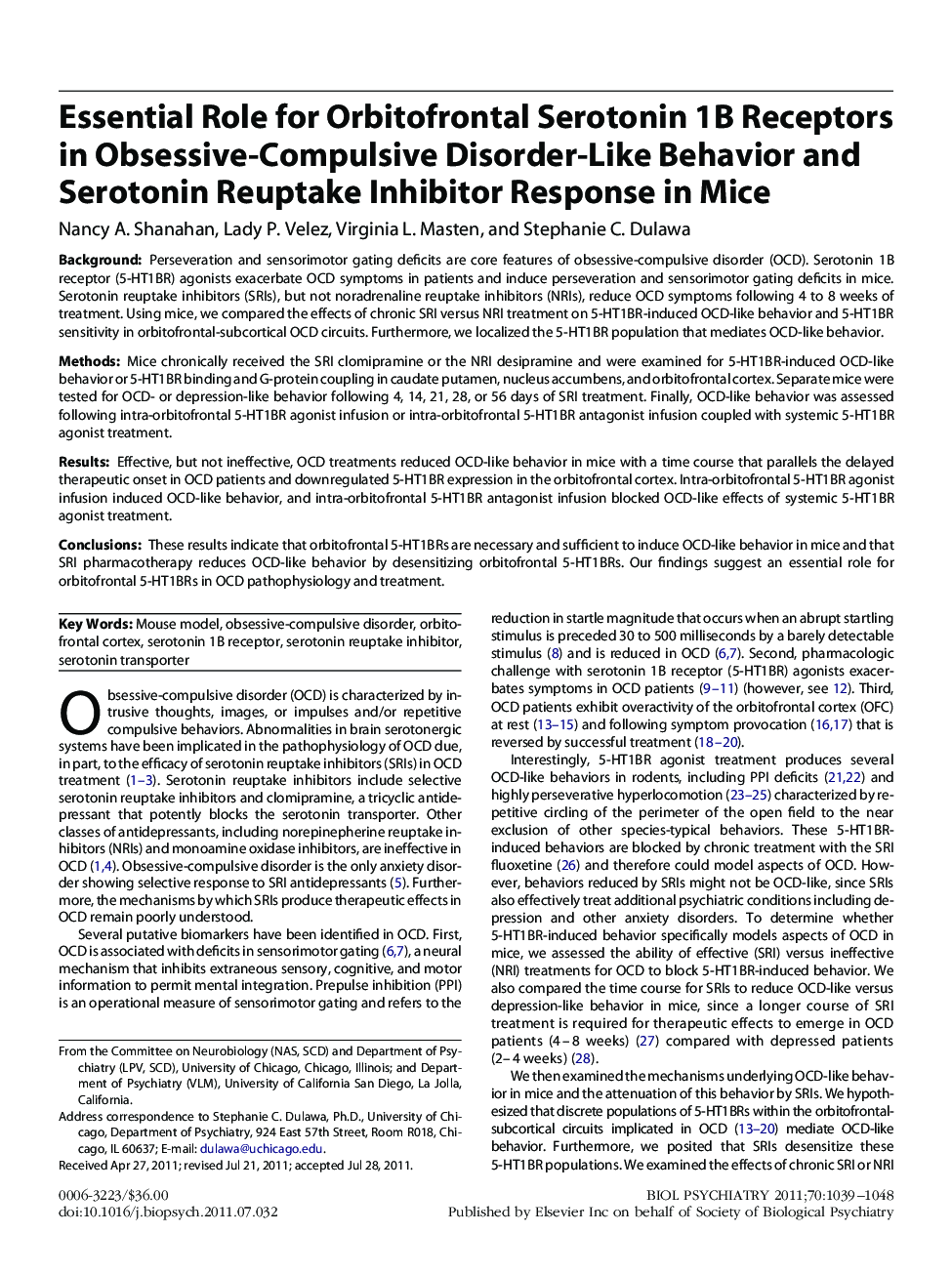| Article ID | Journal | Published Year | Pages | File Type |
|---|---|---|---|---|
| 6227997 | Biological Psychiatry | 2011 | 10 Pages |
BackgroundPerseveration and sensorimotor gating deficits are core features of obsessive-compulsive disorder (OCD). Serotonin 1B receptor (5-HT1BR) agonists exacerbate OCD symptoms in patients and induce perseveration and sensorimotor gating deficits in mice. Serotonin reuptake inhibitors (SRIs), but not noradrenaline reuptake inhibitors (NRIs), reduce OCD symptoms following 4 to 8 weeks of treatment. Using mice, we compared the effects of chronic SRI versus NRI treatment on 5-HT1BR-induced OCD-like behavior and 5-HT1BR sensitivity in orbitofrontal-subcortical OCD circuits. Furthermore, we localized the 5-HT1BR population that mediates OCD-like behavior.MethodsMice chronically received the SRI clomipramine or the NRI desipramine and were examined for 5-HT1BR-induced OCD-like behavior or 5-HT1BR binding and G-protein coupling in caudate putamen, nucleus accumbens, and orbitofrontal cortex. Separate mice were tested for OCD- or depression-like behavior following 4, 14, 21, 28, or 56 days of SRI treatment. Finally, OCD-like behavior was assessed following intra-orbitofrontal 5-HT1BR agonist infusion or intra-orbitofrontal 5-HT1BR antagonist infusion coupled with systemic 5-HT1BR agonist treatment.ResultsEffective, but not ineffective, OCD treatments reduced OCD-like behavior in mice with a time course that parallels the delayed therapeutic onset in OCD patients and downregulated 5-HT1BR expression in the orbitofrontal cortex. Intra-orbitofrontal 5-HT1BR agonist infusion induced OCD-like behavior, and intra-orbitofrontal 5-HT1BR antagonist infusion blocked OCD-like effects of systemic 5-HT1BR agonist treatment.ConclusionsThese results indicate that orbitofrontal 5-HT1BRs are necessary and sufficient to induce OCD-like behavior in mice and that SRI pharmacotherapy reduces OCD-like behavior by desensitizing orbitofrontal 5-HT1BRs. Our findings suggest an essential role for orbitofrontal 5-HT1BRs in OCD pathophysiology and treatment.
